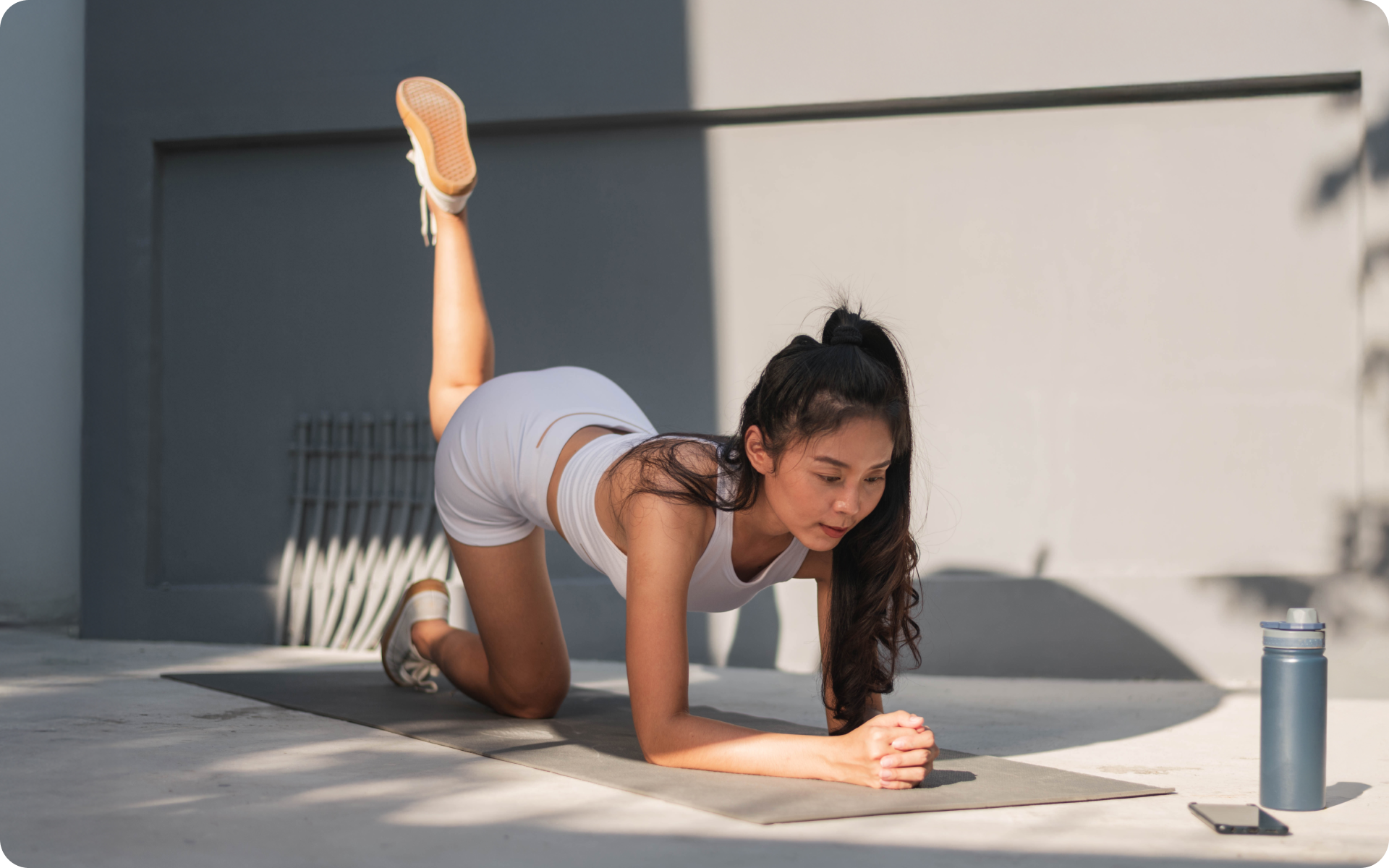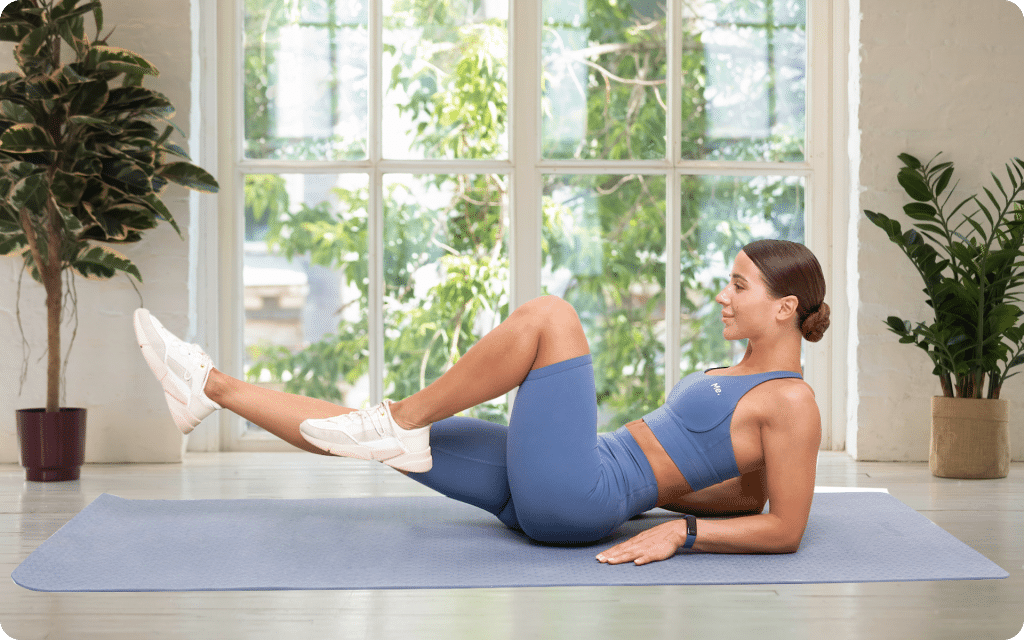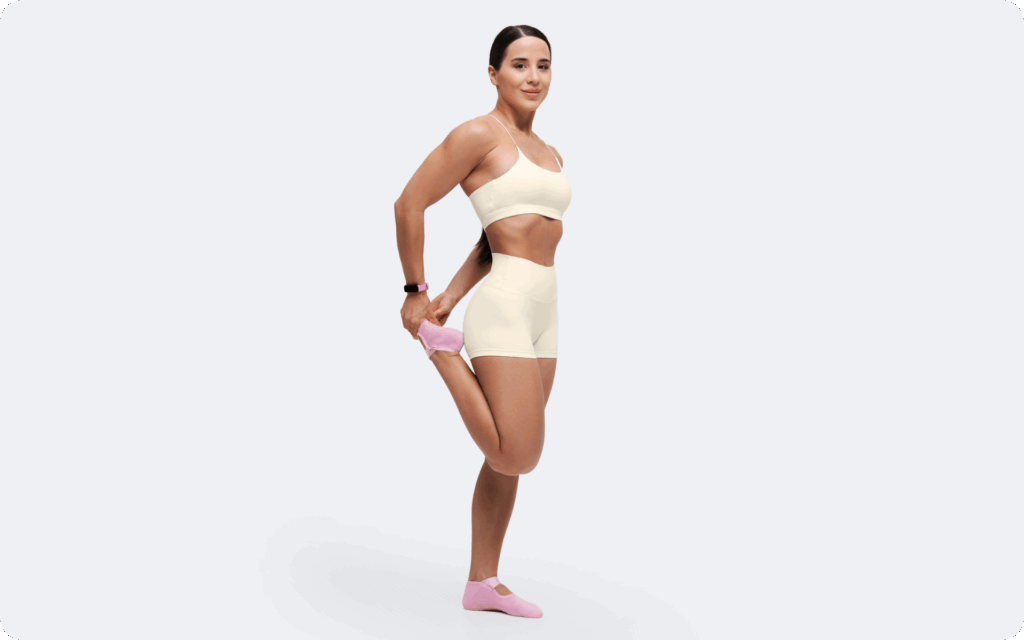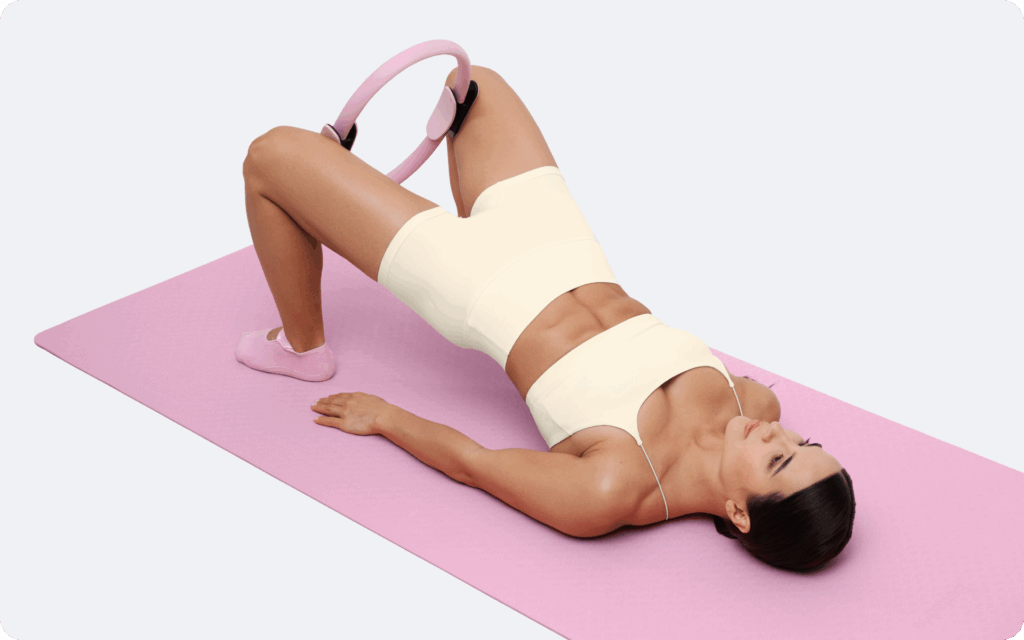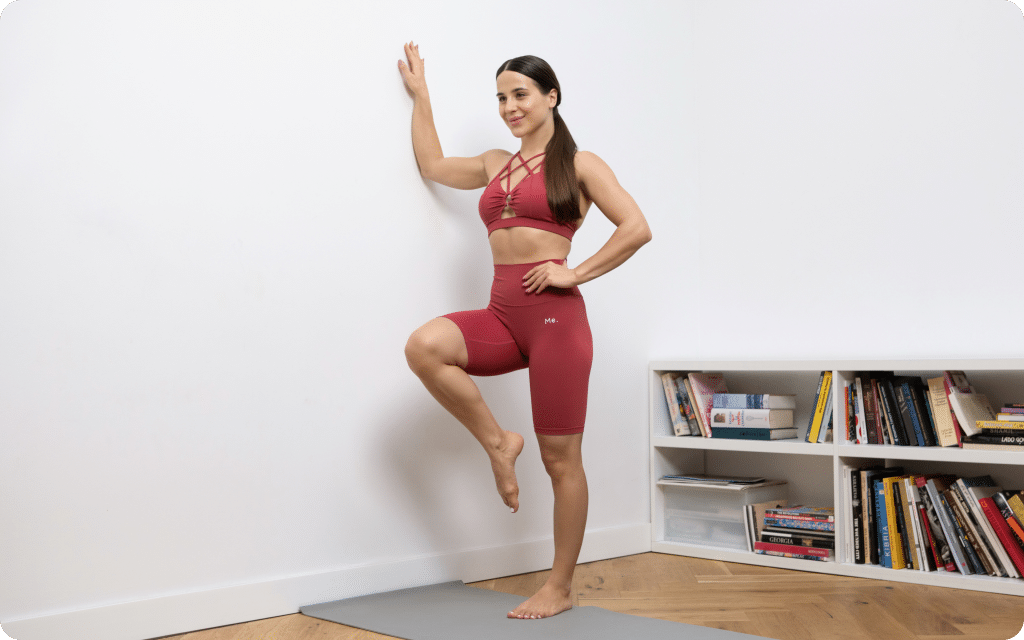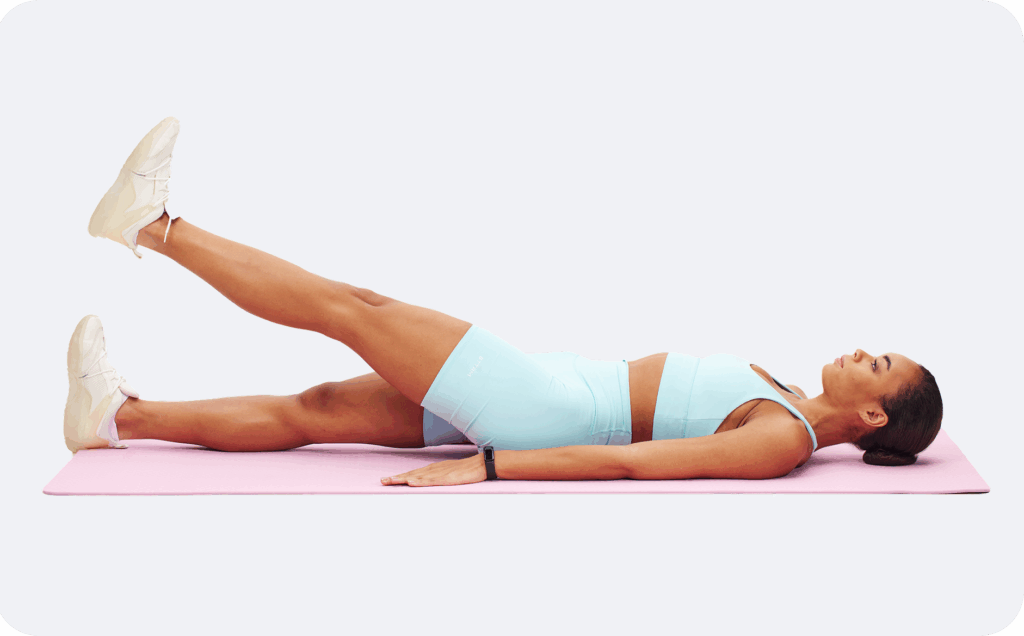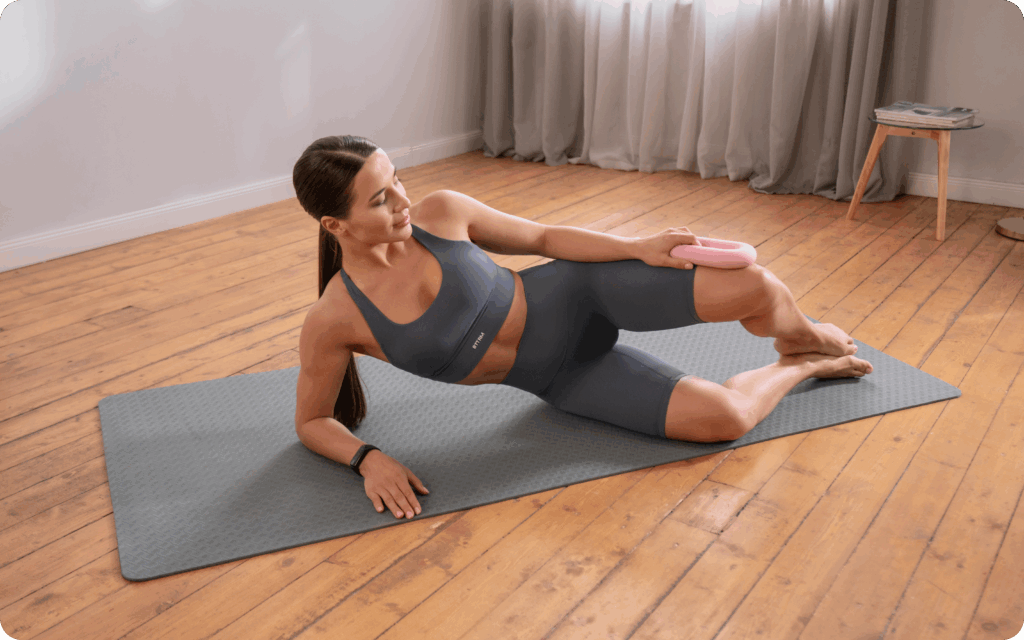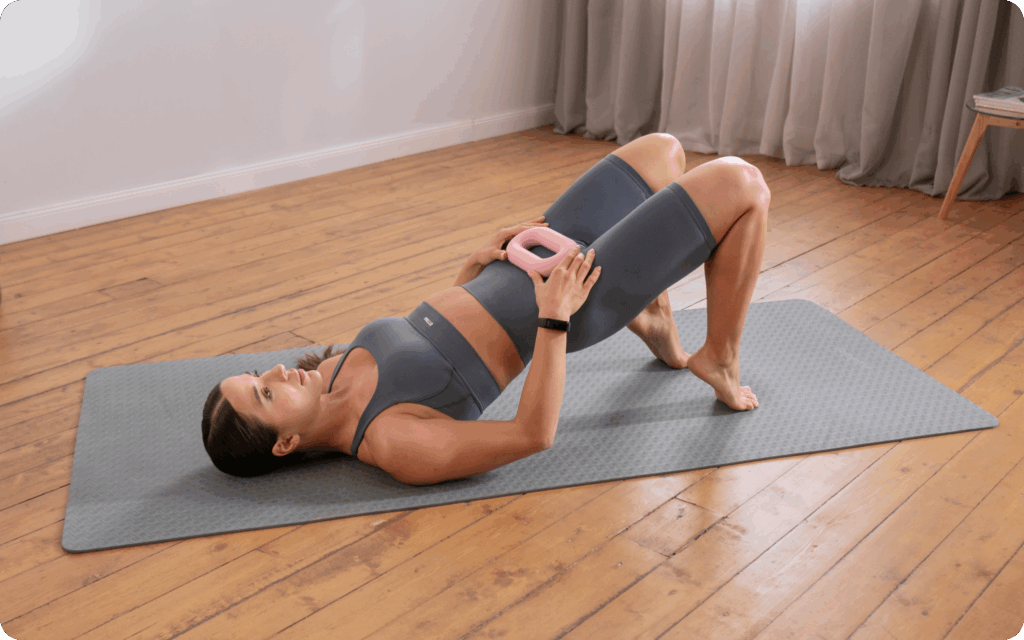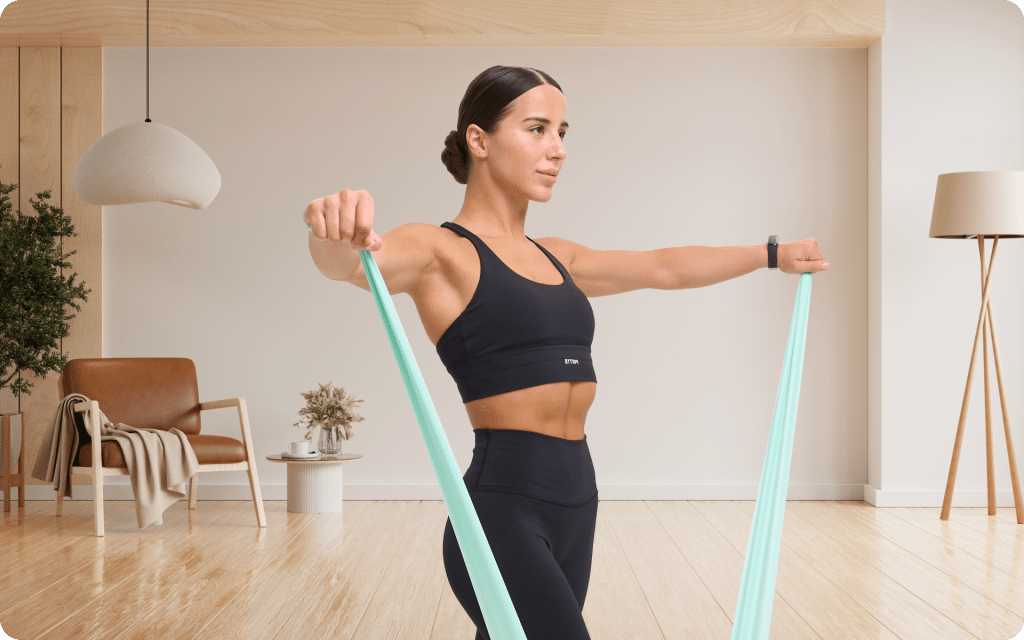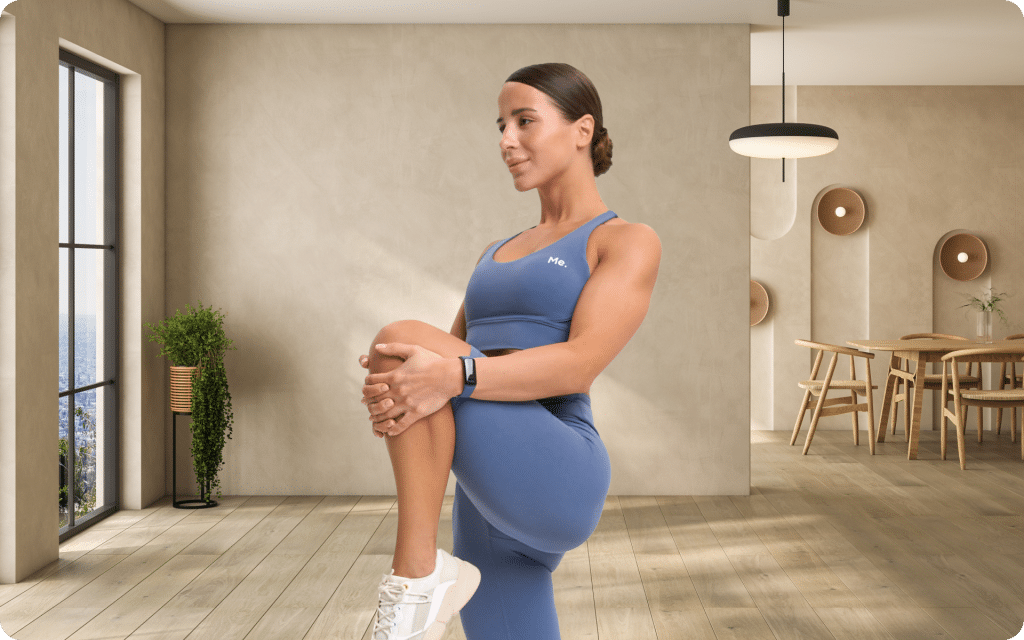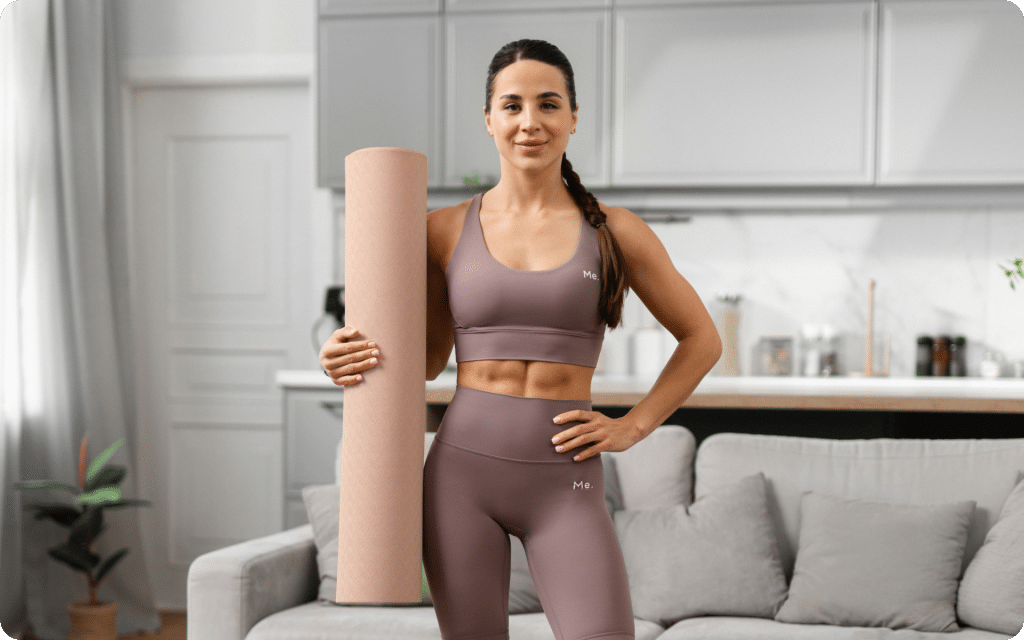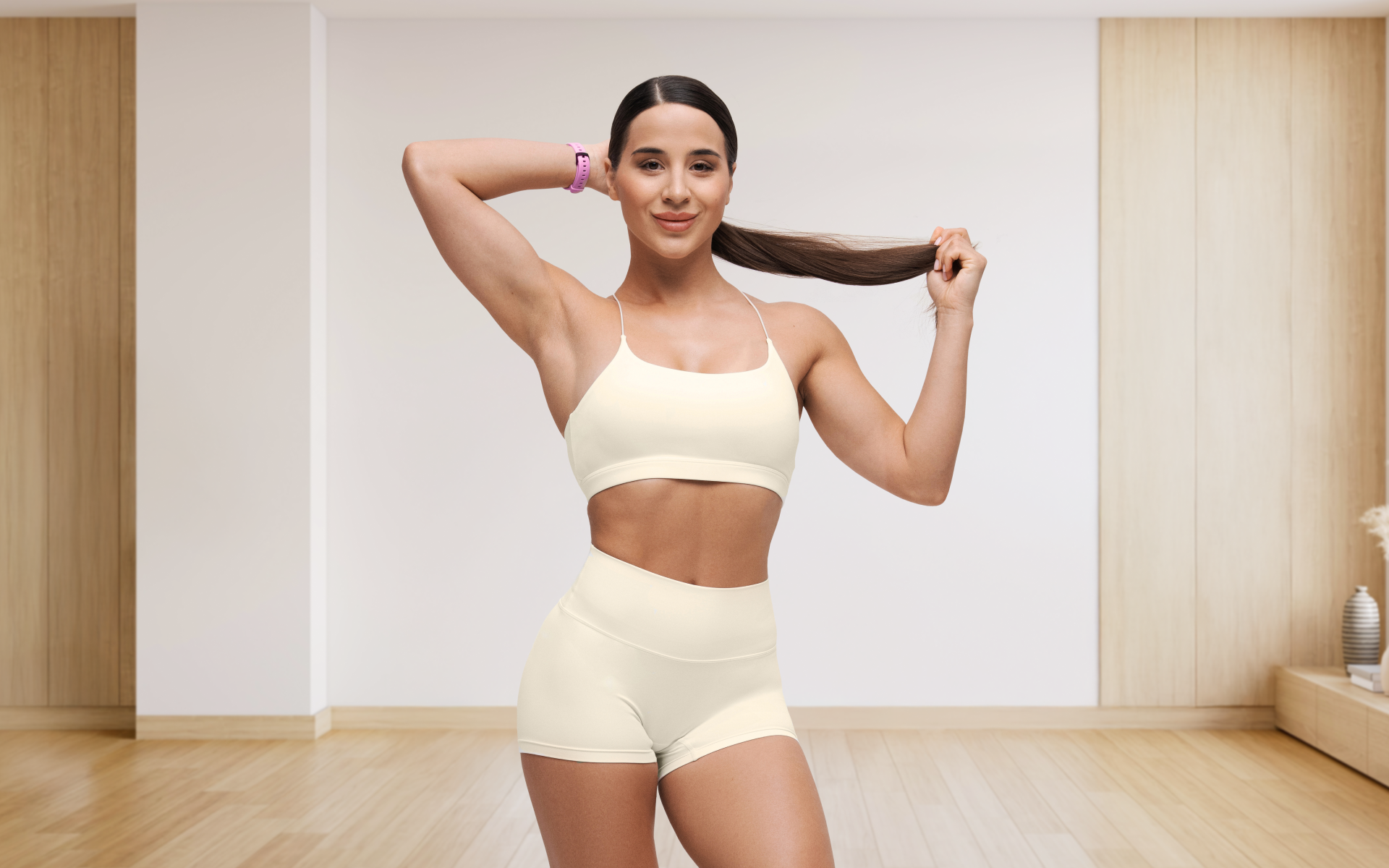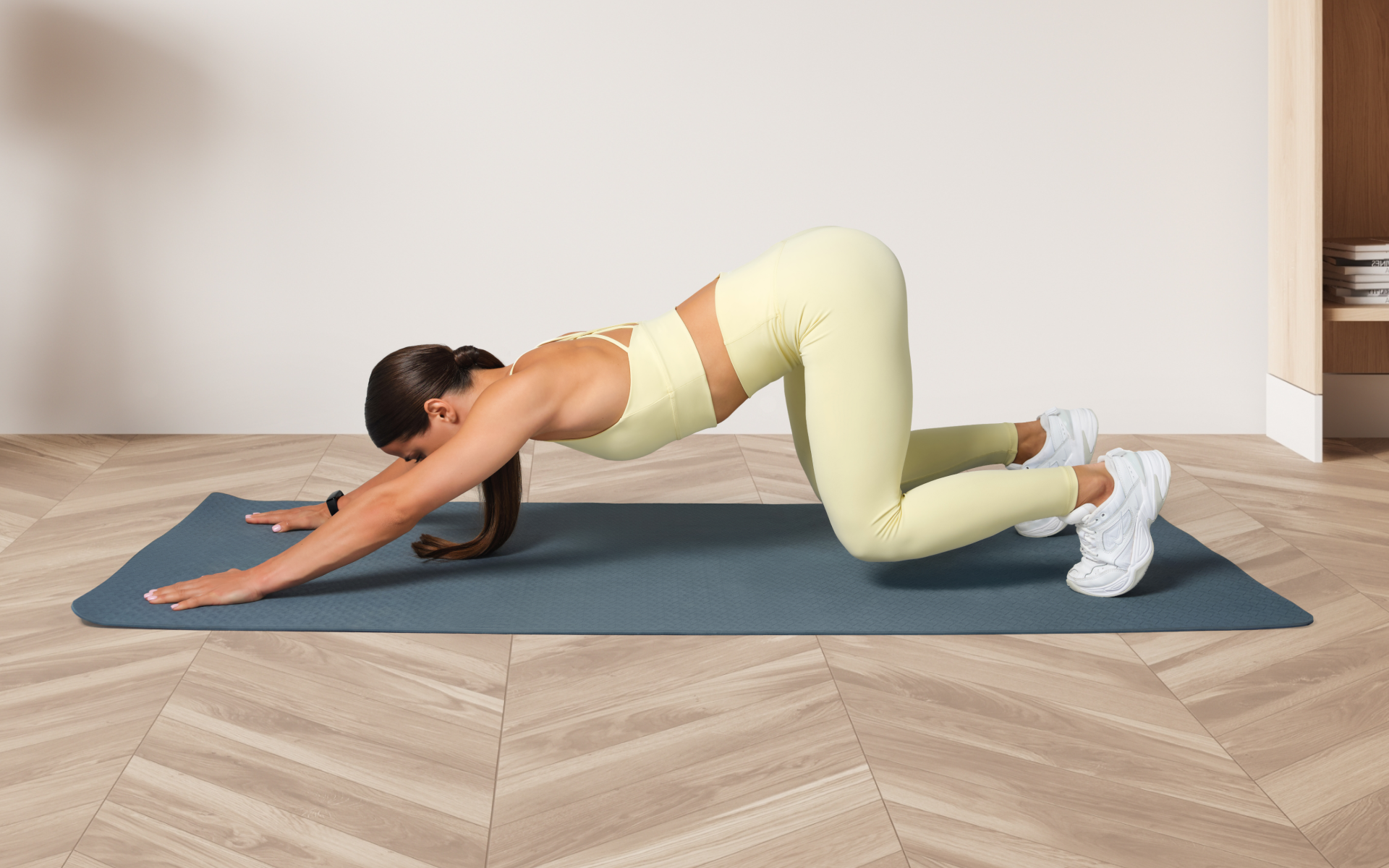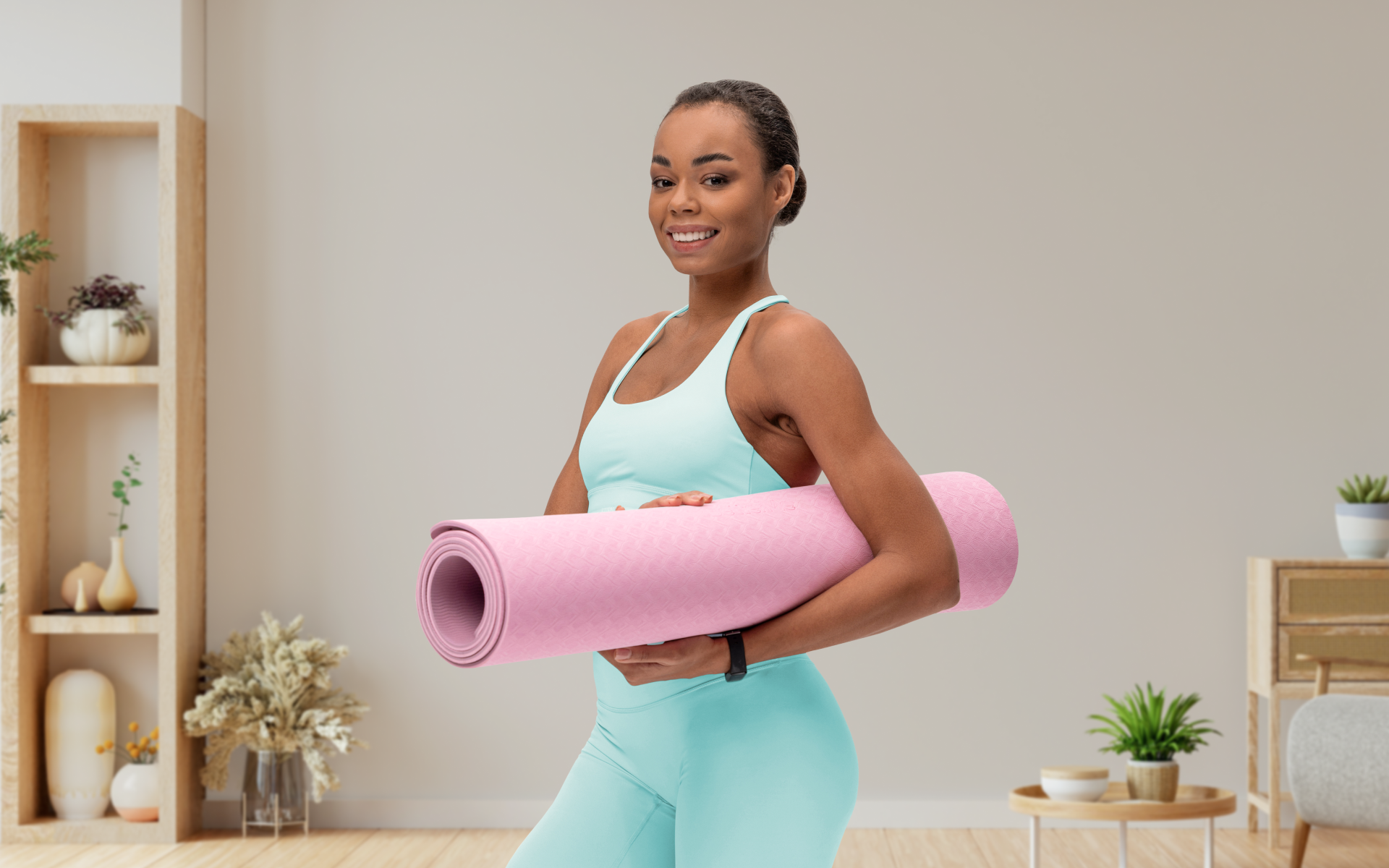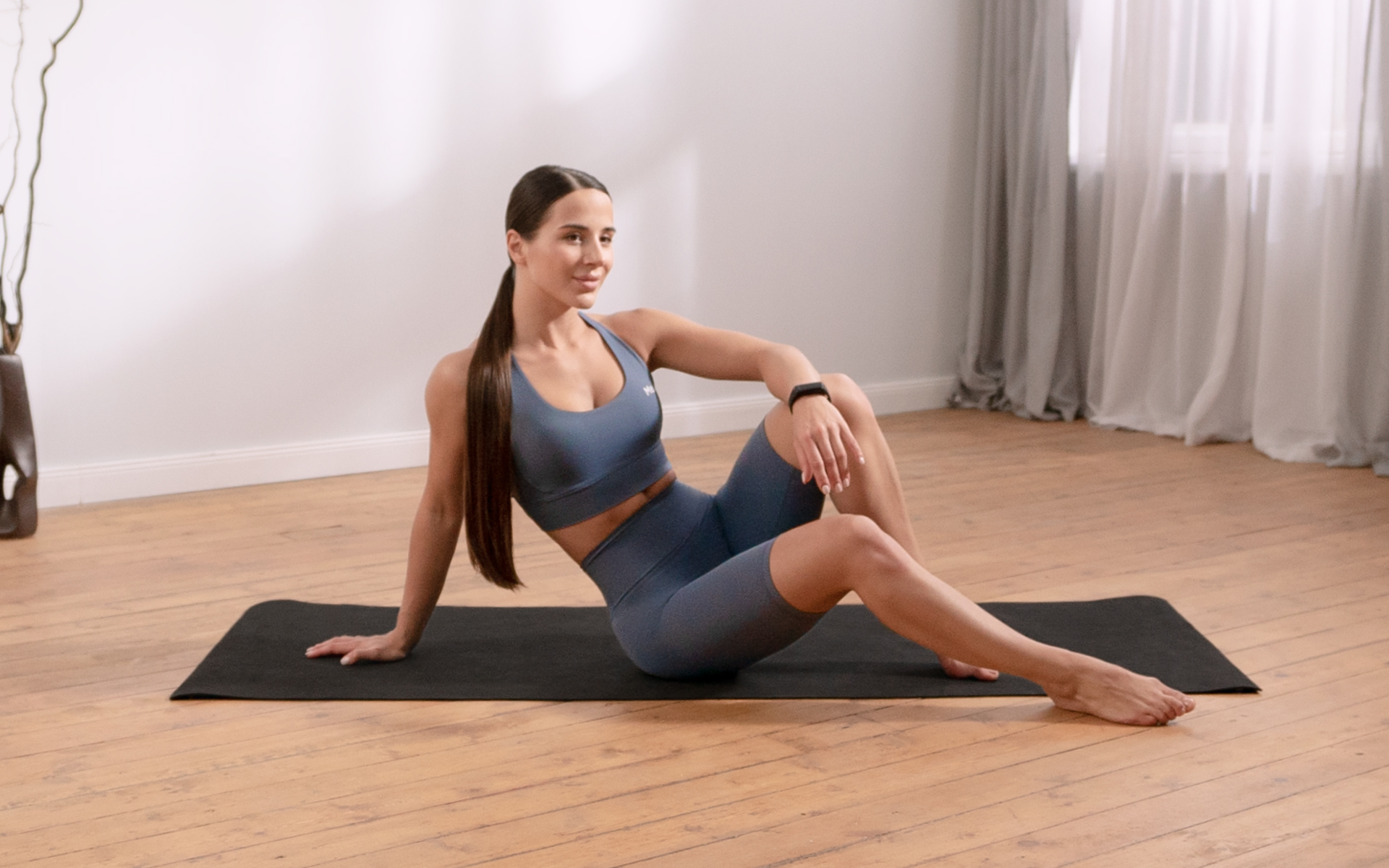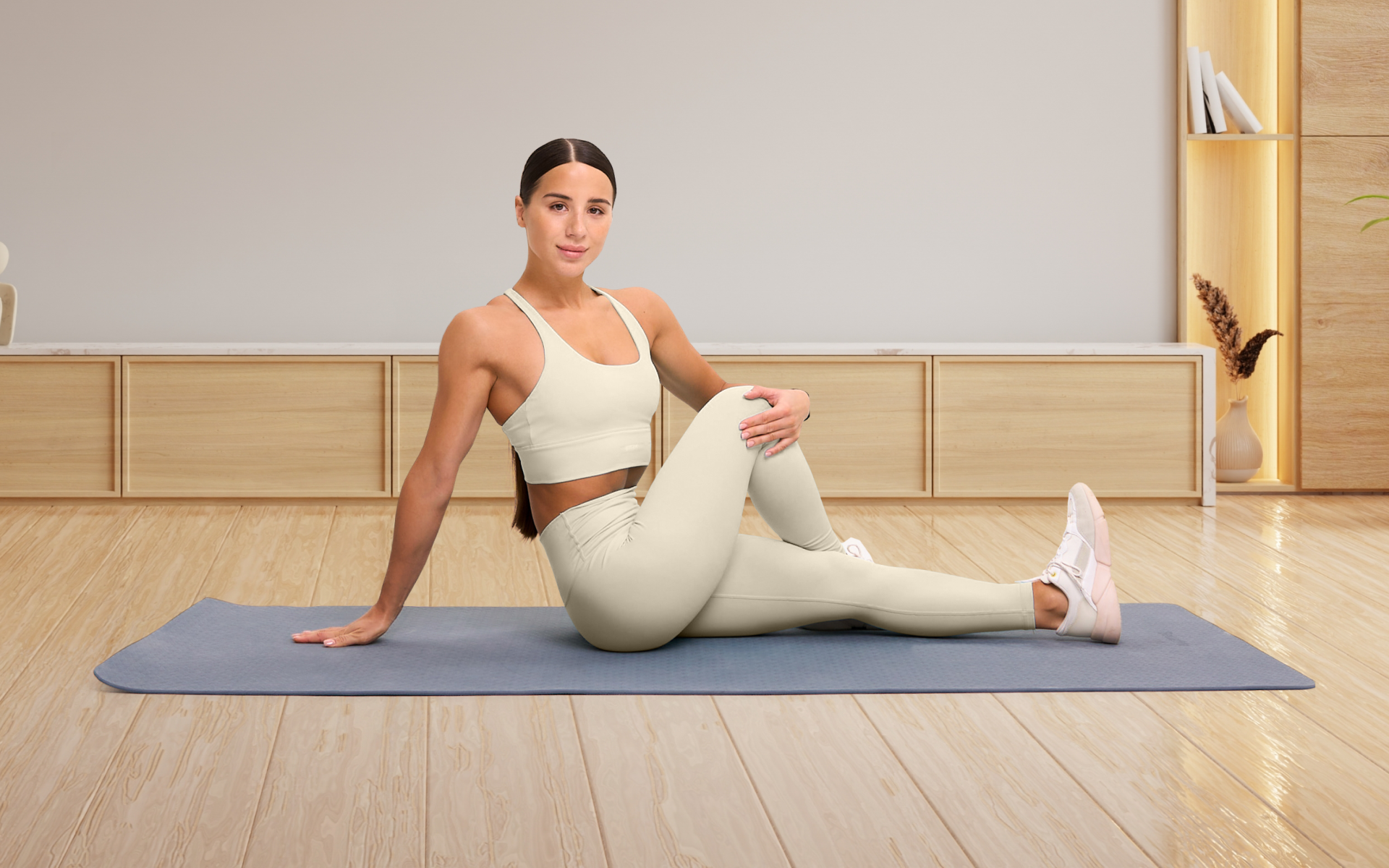Looking for an effective leg workout you can do from the comfort of your home?
A mat Pilates leg workout might be precisely what you need.
Pilates is a low-impact form of exercise that focuses on strength, flexibility, and lean muscle development, making it an excellent choice for building a strong lower body without needing any equipment.
This guide provides a complete mat Pilates leg workout at home, featuring Pilates exercises for legs and glutes. We will explore the principles laid out by Joseph Pilates himself in his book, Return to Life Through Contrology.
You’ll learn about:
- How to perform each Pilates movement correctly
- The benefits of consistency
- How to train for the best results.
What Is a Powerful Mat Pilates Leg Workout?
Many want to know the details on:
What is a mat pilates leg workout for strengthening your legs?
A powerful mat Pilates leg workout is a series of controlled movements designed to strengthen the muscles of the legs and glutes. Following Joseph Pilates’ original sequencing, this workout starts with dynamic stretches to warm up the body, moves into a series of challenging exercises, and finishes with static stretches to cool down.
Here is an 8-exercise mat Pilates leg workout program. Perform the exercises in the order listed to get the most out of your session.
The Workout
- Dynamic Warm-Up (3-5 minutes)
-
- Side Skips: 1 minute
- Leg Swings (Forward & Backward): 10 swings per leg
- Leg Swings (Side-to-Side): 10 swings per leg
- Main Set (8 Exercises)
-
- The Hundred: 1 set of 100 breaths
- The Roll Up: 1 set of 5-8 reps
- The One Leg Circle: 1 set of 5 circles each way, per leg
- The One Leg Stretch: 1 set of 8-10 reps per leg
- Side Leg Lifts (Bent Knee): 2 sets of 15-20 reps per leg
- Side Leg Lifts (Straight Leg): 2 sets of 15-20 reps per leg
- Scissors: 1 set of 15 reps per leg
- Glute Bridge Pulses: 2 sets of 10 reps
- Static Cool-Down (3-5 minutes)
-
- Figure-Four Stretch: Hold for 30 seconds per side
- Hamstring Stretch: Hold for 30 seconds per side
- Quadriceps Stretch: Hold for 30 seconds per side
BetterMe: Health Coaching app helps you achieve your body goals with ease and efficiency by helping to choose proper meal plans and effective workouts. Start using our app and you will see good results in a short time.
Dynamic Warm-Up
Side Skips
- Stand on your mat facing one of the long edges.
- Step your right foot out to the right, then bring your left foot to meet it.
- Continue stepping side-to-side, picking up the pace into a light skip.
- Swing your arms naturally as if you were holding ski poles, rowing them forward and back.
Leg Swings (Forward & Backward)
- Stand tall and hold onto a wall or sturdy chair for balance.
- Keeping your torso upright, swing one leg forward and then backward in a smooth, controlled motion.
- Keep the swinging leg relaxed and let momentum do most of the work.
- Complete all reps on one side before switching to the other.
Leg Swings (Side-to-Side)
- Face the wall or chair you are using for support.
- Swing one leg out to the side and then across the front of your body.
- Maintain an upright posture and keep your core engaged.
- Switch legs after completing the set.
Pilates Leg Exercises
The Hundred
- Lie flat on your back with your knees bent into your chest.
- Stretch your arms long by your sides and extend your legs out to a 45-degree angle.
- Lift your head and shoulders off the mat, keeping your gaze toward your toes.
- Begin to pump your arms up and down vigorously, inhaling for 5 counts and exhaling for 5 counts.
- Complete 10 full breath cycles (100 pumps).
The Roll Up
- Lie flat on your back with your legs straight and arms extended overhead.
- Inhale as you lift your arms toward the ceiling.
- Exhale and begin to roll your upper body off the mat, one vertebra at a time, reaching toward your toes.
- Inhale at the top, then exhale to roll back down to the starting position slowly.
The One Leg Circle
- Lie flat on your back with your arms by your sides, palms down.
- Extend one leg up to the ceiling, keeping it straight. Bend your other leg or extend it on the mat.
- Begin to draw small, controlled circles with the extended leg, initiating the movement from your hip.
- Complete 5 circles in one direction, then reverse for 5 circles in the other direction. Switch legs.
The One Leg Stretch
- Lie on your back and bring both knees to your chest, lifting your head and shoulders off the mat.
- Place your right hand on your right ankle and your left hand on your right knee.
- Extend your left leg out to a 45-degree angle.
- Inhale as you pull your right knee toward you, then exhale as you switch legs, bringing the left knee in and extending the right leg out.
Side Leg Lifts (Bent Knee)
- Lie on your left side with your head resting on your arm.
- Bend your knees to a 90-degree angle, aligning them with your hips.
- Keeping your feet together, lift your right knee toward the ceiling.
- Lower the knee back down with control. Complete all reps before switching sides.
Side Leg Lifts (Straight Leg)
- Lie on your left side in the same starting position.
- Straighten your top (right) leg, keeping it parallel to the floor. Flex your foot.
- Lift the leg toward the ceiling without letting your hips rock backward.
- Slowly lower the leg back down. Complete all reps and switch sides.
Scissors
- Lie on your back and extend both legs toward the ceiling.
- Lower your right leg toward the mat while gently pulling your left leg toward you with both hands. Pulse twice.
- Switch legs in a scissoring motion, lowering the left leg and pulling the right leg toward you. Pulse twice.
- Continue alternating legs.
Glute Bridge Pulses
- Lie on your back with your knees bent, feet flat on the floor, and arms by your sides.
- Lift your hips off the floor until your body forms a straight line from your shoulders to your knees.
- At the top, perform 3 small pulses, lifting your hips slightly higher each time.
- Lower your hips back to the floor with control.
Static Cool-Down
Figure-Four Stretch
- Lie on your back with your knees bent.
- Cross your right ankle over your left thigh.
- Reach through and grasp your left thigh, gently pulling it toward your chest.
- Hold for 30 seconds, then switch sides.
Hamstring Stretch
- Lie on your back and extend one leg up to the ceiling.
- Gently hold the back of your thigh or calf and pull the leg toward you until you feel a stretch.
- Keep both of your hips on the floor. Hold for 30 seconds and switch legs.
Quadriceps Stretch
- Lie on your side or stand, using a wall for support.
- Grab your top foot and gently pull your heel toward your glute.
- Keep your knees aligned and push your hip slightly forward to deepen the stretch.
- Hold for 30 seconds before switching sides.
Ready to explore more movements? Discover other lower body Pilates exercises to add to your routine.
Read more: Is Pilates Good for Core Strength? The Science-Backed Answer
Are Mat Pilates Leg Workouts Effective?
Yes, mat Pilates leg workouts are highly effective. Joseph Pilates designed his method, which he called “Contrology,” to develop the body uniformly, correct posture, and restore physical vitality. When performed consistently, these exercises yield significant positive outcomes for your lower body.
- Uniform Body Development
Joseph Pilates emphasized creating a balanced physique. His exercises work the entire body, ensuring no muscle group is over- or under-trained (1).
For the legs, this means you are not just targeting the large muscles like the quadriceps but also smaller, stabilizing muscles around the hips and ankles. This targeting and muscle engagement lead to balanced strength and improved functional movement (2).
- Increased Suppleness and Grace
Contrology, as Pilates wrote, gives you “suppleness, natural grace, and skill.”
The focus on controlled, precise movements enhances neuromuscular coordination.
This stabilizing factor teaches your muscles to work together more efficiently, leading to smoother, more graceful motions in your everyday life (3).
- Improved Muscular Power and Endurance
Mat Pilates builds both muscular power and endurance (4).
Exercises like The One Leg Circle and Side Leg Lifts challenge your muscles to maintain tension for extended periods, building endurance. The method’s emphasis on deep, controlled breathing also improves blood circulation, feeding oxygen to your muscles so they can work harder for longer (5). For those looking for an extra challenge, incorporating a mat Pilates leg workout with weights, such as ankle weights, can amplify these results.
Expand your routine by exploring a variety of floor mat exercises that complement your leg workout.
Reasons why BetterMe is a safe bet: a wide range of calorie-blasting workouts, finger-licking recipes, 24/7 support, challenges that’ll keep you on your best game, and that just scratches the surface! Start using our app and watch the magic happen.
Does Mat Pilates Tone Legs?
Absolutely. Mat Pilates is excellent for toning legs. Toning refers to the visible definition of muscles, which we achieve by reducing body fat and increasing muscle mass.
Pilates contributes to this process by building lean muscle through consistent resistance training (6).
The exercises in a mat Pilates leg workout use your body weight as resistance.
Movements that require you to lift and hold your legs challenge your muscles to work against gravity. This resistance stimulates muscle fibers, causing them to adapt and become stronger and firmer over time (7).
Unlike some forms of weightlifting that can lead to significant muscle bulk, Pilates promotes the development of long, lean-looking muscles by focusing on controlled, full-range-of-motion movements. It reawakens dormant muscle cells, improving overall muscle function and creating the toned appearance many people seek (8).
How Many Times A Week Should I Do Mat Pilates?
Joseph Pilates recommended performing his exercises 4 times a week for optimal results (9). This frequency aligns with modern strength training principles, which suggest that consistency is crucial for seeing progress.
Training 4 times per week provides a good balance between stimulating your muscles and allowing them adequate time to recover and rebuild. This schedule will enable you to create a routine that hits all major muscle groups multiple times without leading to overtraining (10).
It’s a sustainable frequency that can fit into most lifestyles while delivering the physical and mental benefits Pilates promised.
Read more: Pilates Moves List: The Original 34 Mat Exercises
How Often Should I Do Mat Pilates Leg Workouts?
For targeting a specific muscle group like the legs, training them twice a week is optimal for muscle growth and strength gains (11). This evidence-based recommendation allows for sufficient stimulus to promote adaptation, followed by adequate recovery time.
When you perform a Pilates leg workout, you create microscopic tears in your muscle fibers. The recovery process, which typically takes 48-72 hours, is when your muscles repair and grow stronger.
Training your legs twice a week (for example, on Monday and Thursday) gives your body the perfect window to recover and adapt before the next session. Spacing out your leg workouts allows you to maintain consistency without risking injury or burnout, setting you up for long-term success.
How Long Does It Take To See A Difference With Mat Pilates?
Joseph Pilates famously said, “In 10 sessions you’ll feel the difference, in 20 sessions you’ll see the difference, and in 30 sessions you’ll have a whole new body (9).”
While this timeline is optimistic, it highlights that consistent practice yields noticeable results.
From an exercise physiology perspective, a Pilates leg workout for beginners provides initial improvements in strength and coordination within 4-6 weeks of starting the bodyweight strength program.
These early gains are largely neuromuscular, meaning your brain becomes more efficient at recruiting muscle fibers. Visible changes in muscle tone and definition typically follow, often becoming noticeable after 8-12 weeks of consistent training (2-3 times per week) (12).
After a few months of performing a mat Pilates leg workout no equipment, the exercises become easier. To continue challenging your body and making progress, consider adding resistance. Incorporating light ankle weights or resistance bands can increase the load, forcing your muscles to adapt and grow stronger.
For a comprehensive training plan, check out this complete Pilates leg workout.
Pilates can help create the appearance of slimmer legs by building lean muscle and improving posture. When combined with a balanced diet and cardiovascular exercise to reduce overall body fat, a consistent Pilates practice can lead to more toned and defined legs. Yes, mat Pilates can significantly change your body. With consistent practice, you can expect to see improvements in muscle tone, flexibility, posture, and core strength. It promotes balanced muscle development, which leads to a more streamlined and athletic physique. No single exercise, including Pilates, can completely get rid of cellulite. Cellulite is related to fat deposits and connective tissue structure under the skin. However, by building muscle and improving circulation, Pilates can help reduce the appearance of cellulite and create a smoother look. While 10 minutes of Pilates a day is better than none and can help maintain mobility and core connection, it may not be enough to see significant changes in strength and muscle tone. For more noticeable results, aiming for 30-45 minute sessions a few times a week is more effective.Frequently Asked Questions
Can Pilates slim my legs?
Will mat Pilates change your body?
Can Pilates get rid of cellulite?
Is 10 minutes of Pilates a day enough?
The Bottom Line
A mat Pilates leg workout is a powerful tool for building strength, improving muscle tone, and enhancing your overall physical well-being. By following the principles and exercises laid out by Joseph Pilates, you can create a balanced and effective routine that you can do anywhere, anytime. Remember that consistency is the key to unlocking the full benefits of Pilates. Stick with your practice, and you will feel (and see) the difference.
DISCLAIMER:
This article is intended for general informational purposes only and does not serve to address individual circumstances. It is not a substitute for professional advice or help and should not be relied on for making any kind of decision-making. Any action taken as a direct or indirect result of the information in this article is entirely at your own risk and is your sole responsibility.
BetterMe, its content staff, and its medical advisors accept no responsibility for inaccuracies, errors, misstatements, inconsistencies, or omissions and specifically disclaim any liability, loss or risk, personal, professional or otherwise, which may be incurred as a consequence, directly or indirectly, of the use and/or application of any content.
You should always seek the advice of your physician or other qualified health provider with any questions you may have regarding a medical condition or your specific situation. Never disregard professional medical advice or delay seeking it because of BetterMe content. If you suspect or think you may have a medical emergency, call your doctor.
SOURCES:
- Pilates: how does it work and who needs it? (2011, pmc.ncbi.nlm.nih.gov)
- Effect of Pilates exercises on muscle strength and balance after healed lower limb burns (2024, advrehab.org)
- Comparisons of functional movements and core muscle activity in women according to Pilates proficiency (2024, frontiersin.org)
- Pilates for improvement of muscle endurance, flexibility, balance, and posture (2010, pubmed.ncbi.nlm.nih.gov)
- Pilates Method Improves Cardiorespiratory Fitness: A Systematic Review and Meta-Analysis (2019, mdpi.com)
- The effects of mat Pilates exercise and barrel Pilates exercise on body composition and muscle activity in adult women (2025, sciencedirect.com)
- The adaptations to strength training: morphological and neurological contributions to increased strength (2007, pubmed.ncbi.nlm.nih.gov)
- Effectiveness of Pilates Training on Body Composition and Isokinetic Muscular Strength in Adolescent (2022, researchgate.net)
- PILATES’ Return to Life Through Contrology (n.d., books.out.csli.me)
- Effects of Resistance Training Frequency on Measures of Muscle Hypertrophy: A Systematic Review and Meta-Analysis (2016, link.springer.com)
- A comparison of once versus twice per week training on leg press strength in women (2007, researchgate.net)
Adaptations to Endurance and Strength Training (2018, pmc.ncbi.nlm.nih.gov)
